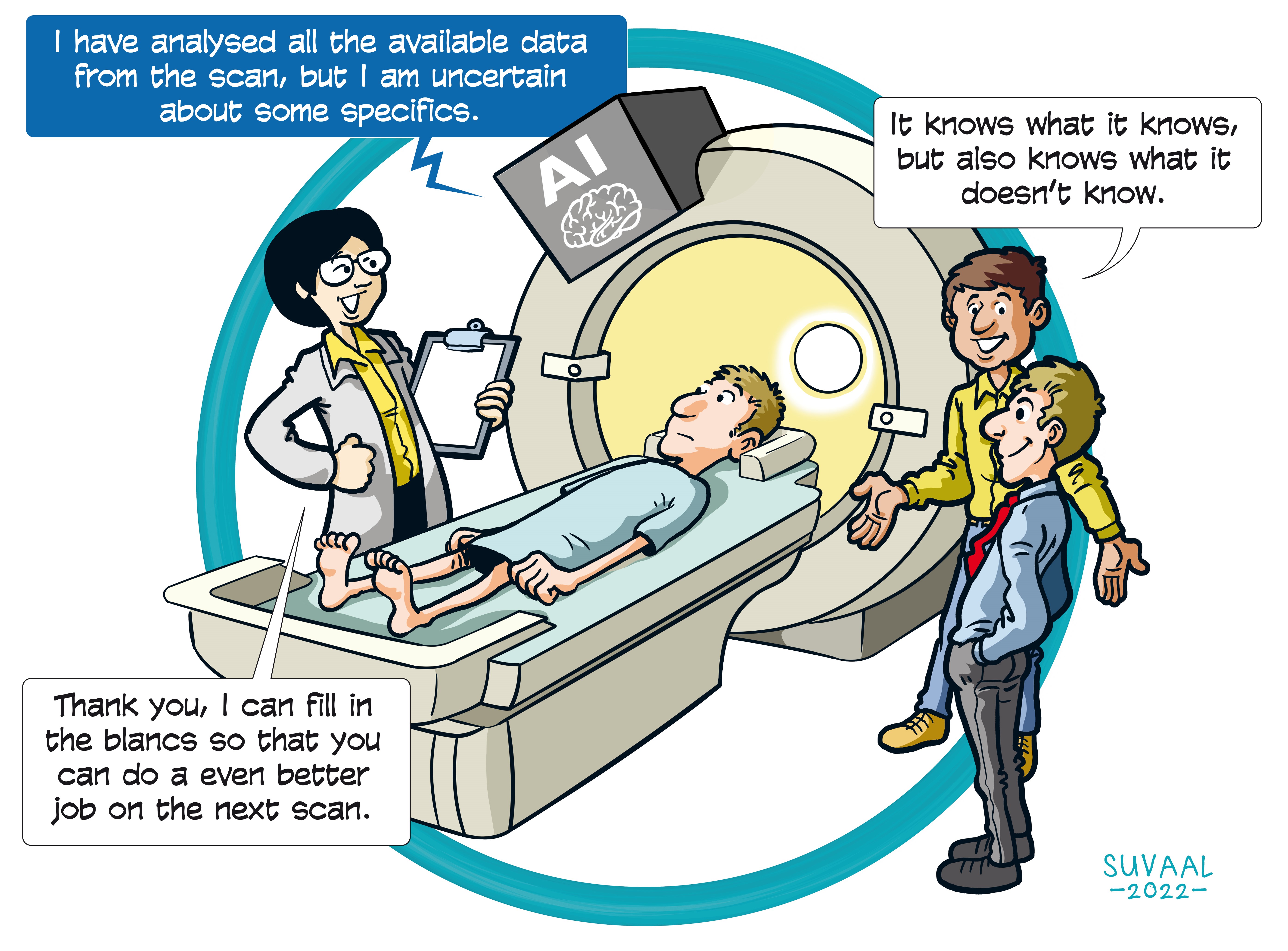Towards Trustworthy Medical Image Analysis by AI
Research Themes: Software Technology & Intellligent Systems, Life Science & Health

Summary of the project
In a hospital the radiology department helps doctors diagnosing a patient by taking images of the human body - eg. MRI, CT scan or X-rays - without harming them. Analysing these images is very time consuming and subjective to the level of expertise of the radiologist. By developing dedicated AI algorithms for analyzing medical images all sorts of biomarkers can be quickly gathered automatically. The researcher is interested at how AI can learn to look at these images and to extract useful information for the doctors to make a diagnosis and decisions on how to treat a patient. However, the used AI’s for analyzing such images – by the so called deep neural networks - are very complex and once trained it works like a “black box”. This makes it very difficult to interpret what it does and even more difficult to predict when it will make errors. For clinical applications, doctors need to trust AI and know the certainty that the AI provides. Using Bayesian principles the researcher is performing uncertainty analysis of the “black box”. She is working on developing an uncertainty metric to be able to understand how the AI interprets the image and to be able to predict the likelihood of the AI making an error. The challenges are to have sufficient good data sets to train the algorithm and to train an AI model with hundreds of millions of parameters. Once trained the AI is very fast to analyse the new data and hence able to support the doctors is their work. The current research also provides AI’s uncertainty along with the analysis results.
What's next?
The next step for the researcher is to create and apply a continuous learning algorithm. In this way, in collaboration with the medical professionals, any new data, especially challenging ones, can become the training data again. Hence, this would lead to training a highly specialised self-learning algorithm becoming a real professional. Another next step is to take ethical considerations in the use and design of the AI into account to get a better perspective on the human subject -related data analysis.
With or Into AI?
Both
Dr. Qian Tao
Faculties involved
- AS